Featured Articles
`Big Baby’ Proves Again That Heavyweights Need Not Have Ripped Physiques

If we were to rate heavyweight champions on the basis of six-pack abs and overall confirmation, it’s a pretty safe bet that the magnificently ripped physiques of Evander Holyfield and Ken Norton would place them at or pretty close to the top of the list of pugilism’s most impressive big-man bodies. Also drawing consideration for a high slot would be Mike “Hercules” Weaver, who briefly held an alphabet title, but, his massive muscles notwithstanding, Weaver is hardly anyone’s idea of a truly great heavyweight.
The old saying – “looks like Tarzan, fights like Jane” – doesn’t come close to applying to Anthony Joshua (22-0, 21 KOs), the IBF/WBA/WBO heavyweight champ who defends those titles against Jarrell “Big Baby” Miller (23-0-1, 20 KOs) on June 1 in Madison Square Garden. Although the 6-foot-6 Joshua has fought as low as 229 pounds and as high as 254, at those weights and everything in-between he looks the part of a scary-good Tarzan who can and almost always pulverizes the guy selected to serve as his designated victim.
Which brings us to the 6-foot-4 “Big Baby” Miller, the well-fed Brooklyn, N.Y., native who has shown he can scrap a lot more like Tarzan than Jane, but at first glance is a closer physical approximation to Norm Peterson, the chubby guy on the end bar stool in Cheers so memorably played by George Wendt, winner of six Emmy Awards for Best Supporting Actor. Although Miller has averaged a semi-reasonable 265.7 pounds per ring appearance over the course of his professional boxing career, with a low of 242, he has come in at 300-plus for each of his last three bouts and it seems a safe bet he’ll officially come in anywhere from 40 to 70 pounds heavier than Joshua when they square off three-plus months hence.
All of which raises a question of how much is too much when it comes to a corpulent heavyweight’s scale reading? Talent comes in all shapes and sizes, and there are reasons why seemingly fat fighters are, well, seemingly fat fighters. It could be genetics (it’s so convenient to blame mom or dad when you have to shop for pants with a larger waist size), a slow metabolism or simply a fondness for unhealthy fast food, second and third helpings at the dinner table and an insatiable sweet tooth.
George Foreman’s body looked a lot like Joshua’s does now in the earlier phase of his Hall of Fame career. No, the glowering Foreman that laid waste to Joe Frazier and Ken Norton didn’t sport the six-pack abs of a male underwear model, but he had a thick – not overly thick – frame and could deliver battering-ram punches with either fist. It wasn’t until he came off his 10-year retirement from boxing that Big George, now a smiling, playful jokester at press conferences, poked fun at his enlarged self, the one that came in at a career-high 267 pounds after paring down from 300-plus for his first comeback fight, against Steve Zouski. Foreman cracked wise about being on a “seafood” diet, telling media types that what he meant was he ate all the food he saw.
Other than Foreman, the best of the fight game’s (too-)big men is Riddick Bowe, another Hall of Famer whose appetite for high-calorie fare was matched only by his top-tier skill set. The aptly nicknamed “Big Daddy” was terrific for a time and might have remained so for even longer had he been more diligent in heeding the dietary and training dictums of his strength-and-conditioning coach, Mackie Shilstone, and legendary trainer Eddie Futch, both of whom became understandably frustrated when Bowe would allow himself to blow up 40 to 50 pounds above his optimal fighting weight between bouts.
Other accomplished big guys who were able to overcome the burden of too many excess pounds are future first-ballot Hall of Famer James Toney, who fought as low as 157 pounds and won widely recognized world championships at middleweight and super middleweight before gorging himself up to the heavyweight ranks where he defeated, among others, Holyfield, Fres Oquendo and Dominick Guinn; “Two-Ton” Tony Galento, a veritable fireplug of a man who shockingly knocked down seemingly invincible heavyweight champ Joe Louis before falling himself, and Buster Mathis Sr., the dancing bear whose jiggly love handles didn’t prevent him from going the distance with Muhammad Ali and Jerry Quarry.
When it comes to almost unfathomable heft, however, special mention must be made to Eric “Butterbean” Esch, the erstwhile “King of the Four-Rounders,” who despite being only 5-11½ logged 90 of his 91 pro bouts (77-10-4, 58 KOs) at 300 or more pounds, including three at 400-plus pounds. All right, so The Bean’s list of opponents for the most part was hardly a Murderer’s Row. It should be noted, however, that he defeated Louis Monaco, who defeated Kevin McBride, who defeated Mike Tyson, who defeated Larry Holmes, who defeated Muhammad Ali.
Honorable mention, if you want to call it that, is reserved for Gabe “Big G” Brown, who managed to compile a winning record (18-17-4, 12 KOs) despite weighing 300 or more pounds for 33 bouts, with a high of 367; Dustin “Worm” Nichols (5-12, 5 KOs), who came in at 400 or more four times and the rest at 300-plus, with all 12 of his losses by knockout; Alonzo “Big Zo” Butler (31-3-2, 24 KOs), who is still active and might yet evolve, considering his three most recent bouts were at 300-plus pounds, into an updated version of “Big Baby” Miller.
If you want to tick off “Bronco” Billy Wright (43-4, 34 KOs), he of the seven bouts at 300 or more pounds, try comparing him to Butterbean. “If you think I’m a bum or a joke, try saying that to my face. I guarantee you won’t be laughing for long,” the now-retired Bronco Billy, 54, said in 2015, when he was the WBC’s 20th-ranked heavyweight. “I can knock out anybody on the planet, with either hand. I can knock them cold.”
In retrospect, a matchup of Butterbean and Bronco Billy now rates among my all-time matchups that never happened, but should have. Whoever went down would cause a vibration that I’d like to think could have been registered on the Richter Scale.
Boxing, of course, is not the only sport where gifted but gluttonous athletes overcame, if briefly, their inclination to succumb to the more vexing temptations of food. Remember the time that third baseman Pablo “Kung Fu Panda” Sandoval’s belt buckle snapped and his pants nearly slid down when he took a particularly vicious swing that missed? Basketball had the man with two nicknames, former University of Kentucky center Melvin Turpin, who alternately went by “Turp the Burp” and “Lard of the Rims”, and no one will ever forget the sight of blimpish quarterback Jared Lorenzen, dubbed the “Pillsbury Throwboy,” who could fire lefthanded lasers but ate himself out of the NFL, where he once received a Super Bowl ring as the backup to starter Eli Manning for the New York Giants’ SB XLII victory over the New England Patriots.
It’s a longshot that Big Baby Miller could pull off the upset of Anthony Joshua, but if he did it would serve as an inspiration to couch potatoes everywhere that athletic glory just might be theirs if they put aside the potato chips and beer, at least for a little while. After all, it isn’t the size of the dog in the fight, it’s the size of the fight in the dog that matters, right? Even if the dog in question is as large as a Clydesdale.
Bernard Fernandez is the retired boxing writer for the Philadelphia Daily News. He is a five-term former president of the Boxing Writers Association of America, an inductee into the Pennsylvania, New Jersey and Atlantic City Boxing Halls of Fame and the recipient of the Nat Fleischer Award for Excellence in Boxing Journalism and the Barney Nagler Award for Long and Meritorious Service to Boxing.
Check out more boxing news on video at The Boxing Channel
To comment on this article in The Fight Forum CLICK HERE
Featured Articles
Floyd Mayweather has Another Phenom and his name is Curmel Moton
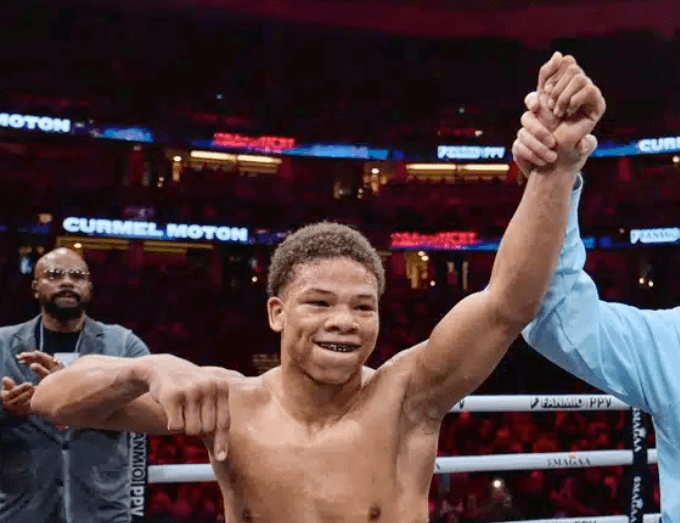
Floyd Mayweather has Another Phenom and his name is Curmel Moton
In any endeavor, the defining feature of a phenom is his youth. Philadelphia Phillies outfielder Bryce Harper was a phenom. He was on the radar screen of baseball’s most powerful player agents when he was 14 years old.
Curmel Moton, who turns 19 in June, is a phenom. Of all the young boxing stars out there, wrote James Slater in July of last year, “Curmel Moton is the one to get most excited about.”
Moton was born in Salt Lake City, Utah. His father Curtis Moton, a barber by trade, was a big boxing fan and specifically a big fan of Floyd Mayweather Jr. When Curmel was six, Curtis packed up his wife (Curmel’s stepmom) and his son and moved to Las Vegas. Curtis wanted his son to get involved in boxing and there was no better place to develop one’s latent talents than in Las Vegas where many of the sport’s top practitioners came to train.
Many father-son relationships have been ruined, or at least frayed, by a father’s unrealistic expectations for his son, but when it came to boxing, the boy was a natural and he felt right at home in the gym.
The gym the Motons patronized was the Mayweather Boxing Club. Curtis took his son there in hopes of catching the eye of the proprietor. “Floyd would occasionally drop by the gym and I was there so often that he came to recognize me,” says Curmel. What he fails to add is that the trainers there had Floyd’s ear. “This kid is special,” they told him.
It costs a great deal of money for a kid to travel around the country competing in a slew of amateur boxing tournaments. Only a few have the luxury of a sponsor. For the vast majority, fund raisers such as car washes keep the wheels greased.
Floyd Mayweather stepped in with the financial backing needed for the Motons to canvas the country in tournaments. As an amateur, Curmel was — take your pick — 156-7 or 144-6 or 61-3 (the latter figure from boxrec). Regardless, at virtually every tournament at which he appeared, Curmel Moton was the cock of the walk.
Before the pandemic, Floyd Mayweather Jr had a stable of boxers he promoted under the banner of “The Money Team.” In talking about his boxers, Floyd was understated with one glaring exception – Gervonta “Tank” Davis, now one of boxing’s top earners.
When Floyd took to praising Curmel Moton with the same effusive language, folks stood up and took notice.
Curmel made his pro debut on Sept. 30, 2023, at the T-Mobile Arena in Las Vegas on the undercard of the super middleweight title fight between Canelo Alvarez and Jermell Charlo. After stopping his opponent in the opening round, he addressed a flock of reporters in the media room with Floyd standing at his side. “I felt ready,” he said, “I knew I had Floyd behind me. He believes in me. I had the utmost confidence going into the fight. And I went in there and did what I do.”
Floyd ventured the opinion that Curmel was already a better fighter than Leigh Wood, the reigning WBA world featherweight champion who would successfully defend his belt the following week.
Moton’s boxing style has been described as a blend of Floyd Mayweather and Tank Davis. “I grew up watching Floyd, so it’s natural I have some similarities to him,” says Curmel who sparred with Tank in late November of 2021 as Davis was preparing for his match with Isaac “Pitbull” Cruz. Curmell says he did okay. He was then 15 years old and still in school; he dropped out as soon as he reached the age of 16.
Curmel is now 7-0 with six KOs, four coming in the opening round. He pitched an 8-round shutout the only time he was taken the distance. It’s not yet official, but he returns to the ring on May 31 at Mandalay Bay in Las Vegas where Caleb Plant and Jermall Charlo are co-featured in matches conceived as tune-ups for a fall showdown. The fight card will reportedly be free for Amazon Prime Video subscribers.
Curmel’s presumptive opponent is Renny Viamonte, a 28-year-old Las Vegas-based Cuban with a 4-1-1 (2) record. It will be Curmel’s first professional fight with Kofi Jantuah the chief voice in his corner. A two-time world title challenger who began his career in his native Ghana, the 50-year-old Jantuah has worked almost exclusively with amateurs, a recent exception being Mikaela Mayer.
It would seem that the phenom needs a tougher opponent than Viamonte at this stage of his career. However, the match is intriguing in one regard. Viamonte is lanky. Listed at 5-foot-11, he will have a seven-inch height advantage.
Keeping his weight down has already been problematic for Moton. He tipped the scales at 128 ½ for his most recent fight. His May 31 bout, he says, will be contested at 135 and down the road it’s reasonable to think he will blossom into a welterweight. And with each bump up in weight, his short stature will theoretically be more of a handicap.
For fun, we asked Moton to name the top fighter on his pound-for-pound list. “[Oleksandr] Usyk is number one right now,” he said without hesitation,” great footwork, but guys like Canelo, Crawford, Inoue, and Bivol are right there.”
It’s notable that there isn’t a young gun on that list. Usyk is 38, a year older than Crawford; Inoue is the pup at age 32.
Moton anticipates that his name will appear on pound-for-pound lists within the next two or three years. True, history is replete with examples of phenoms who flamed out early, but we wouldn’t bet against it.
To comment on this story in the Fight Forum CLICK HERE
Featured Articles
Arne’s Almanac: The First Boxing Writers Assoc. of America Dinner Was Quite the Shindig
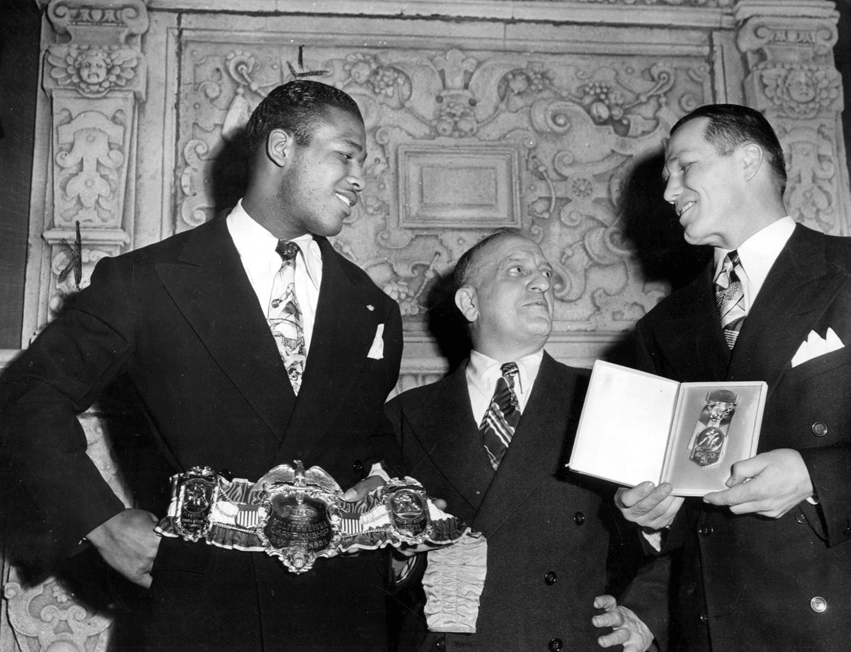
The first annual dinner of the Boxing Writers Association of America was staged on April 25, 1926 in the grand ballroom of New York’s Hotel Astor, an edifice that rivaled the original Waldorf Astoria as the swankiest hotel in the city. Back then, the organization was known as the Boxing Writers Association of Greater New York.
The ballroom was configured to hold 1200 for the banquet which was reportedly oversubscribed. Among those listed as agreeing to attend were the governors of six states (New York, New Jersey, Massachusetts, Pennsylvania, Connecticut, and Maryland) and the mayors of 10 of America’s largest cities.
In 1926, radio was in its infancy and the digital age was decades away (and inconceivable). So, every journalist who regularly covered boxing was a newspaper and/or magazine writer, editor, or cartoonist. And at this juncture in American history, there were plenty of outlets for someone who wanted to pursue a career as a sportswriter and had the requisite skills to get hired.
The following papers were represented at the inaugural boxing writers’ dinner:
New York Times
New York News
New York World
New York Sun
New York Journal
New York Post
New York Mirror
New York Telegram
New York Graphic
New York Herald Tribune
Brooklyn Eagle
Brooklyn Times
Brooklyn Standard Union
Brooklyn Citizen
Bronx Home News
This isn’t a complete list because a few of these papers, notably the New York World and the New York Journal, had strong afternoon editions that functioned as independent papers. Plus, scribes from both big national wire services (Associated Press and UPI) attended the banquet and there were undoubtedly a smattering of scribes from papers in New Jersey and Connecticut.
Back then, the event’s organizer Nat Fleischer, sports editor of the New York Telegram and the driving force behind The Ring magazine, had little choice but to limit the journalistic component of the gathering to writers in the New York metropolitan area. There wasn’t a ballroom big enough to accommodate a good-sized response if he had extended the welcome to every boxing writer in North America.
The keynote speaker at the inaugural dinner was New York’s charismatic Jazz Age mayor James J. “Jimmy” Walker, architect of the transformative Walker Law of 1920 which ushered in a new era of boxing in the Empire State with a template that would guide reformers in many other jurisdictions.
Prizefighting was then associated with hooligans. In his speech, Mayor Walker promised to rid the sport of their ilk. “Boxing, as you know, is closest to my heart,” said hizzoner. “So I tell you the police force is behind you against those who would besmirch or injure boxing. Rowdyism doesn’t belong in this town or in your game.” (In 1945, Walker would be the recipient of the Edward J. Neil Memorial Award given for meritorious service to the sport. The oldest of the BWAA awards, the previous recipients were all active or former boxers. The award, no longer issued under that title, was named for an Associated Press sportswriter and war correspondent who died from shrapnel wounds covering the Spanish Civil War.)
Another speaker was well-traveled sportswriter Wilbur Wood, then affiliated with the Brooklyn Citizen. He told the assembly that the aim of the organization was two-fold: to help defend the game against its detractors and to promote harmony among the various factions.
Of course, the 1926 dinner wouldn’t have been as well-attended without the entertainment. According to press dispatches, Broadway stars and performers from some of the city’s top nightclubs would be there to regale the attendees. Among the names bandied about were vaudeville superstars Sophie Tucker and Jimmy Durante, the latter of whom would appear with his trio, Durante, (Lou) Clayton, and (Eddie) Jackson.
There was a contraction of New York newspapers during the Great Depression. Although empirical evidence is lacking, the inaugural boxing writers dinner was likely the largest of its kind. Fifteen years later, in 1941, the event drew “more than 200” according to a news report. There was no mention of entertainment.
In 1950, for the first time, the annual dinner was opened to the public. For $25, a civilian could get a meal and mingle with some of his favorite fighters. Sugar Ray Robinson was the Edward J. Neil Award winner that year, honored for his ring exploits and for donating his purse from the Charlie Fusari fight to the Damon Runyon Cancer Fund.
There was no formal announcement when the Boxing Writers Association of Greater New York was re-christened the Boxing Writers Association of America, but by the late 1940s reporters were referencing the annual event as simply the boxing writers dinner. By then, it had become traditional to hold the annual affair in January, a practice discontinued after 1971.
The winnowing of New York’s newspaper herd plus competing banquets in other parts of the country forced Nat Fleischer’s baby to adapt. And more adaptations will be necessary in the immediate future as the future of the BWAA, as it currently exists, is threatened by new technologies. If the forthcoming BWAA dinner (April 30 at the Edison Ballroom in mid-Manhattan) were restricted to wordsmiths from the traditional print media, the gathering would be too small to cover the nut and the congregants would be drawn disproportionately from the geriatric class.
Some of those adaptations have already started. Last year, Las Vegas resident Sean Zittel, a recent UNLV graduate, had the distinction of becoming the first videographer welcomed into the BWAA. With more and more people getting their news from sound bites, rather than the written word, the videographer serves an important function.
The reporters who conducted interviews with pen and paper have gone the way of the dodo bird and that isn’t necessarily a bad thing. A taped interview for a “talkie” has more integrity than a story culled from a paper and pen interview because it is unfiltered. Many years ago, some reporters, after interviewing the great Joe Louis, put words in his mouth that made him seem like a dullard, words consistent with the Sambo stereotype. In other instances, the language of some athletes was reconstructed to the point where the reader would think the athlete had a second job as an English professor.
The content created by videographers is free from that bias. More of them will inevitably join the BWAA and similar organizations in the future.
Photo: Nat Fleischer is flanked by Sugar Ray Robinson and Tony Zale at the 1947 boxing writers dinner.
Featured Articles
Gabriela Fundora KOs Marilyn Badillo and Perez Upsets Conwell in Oceanside
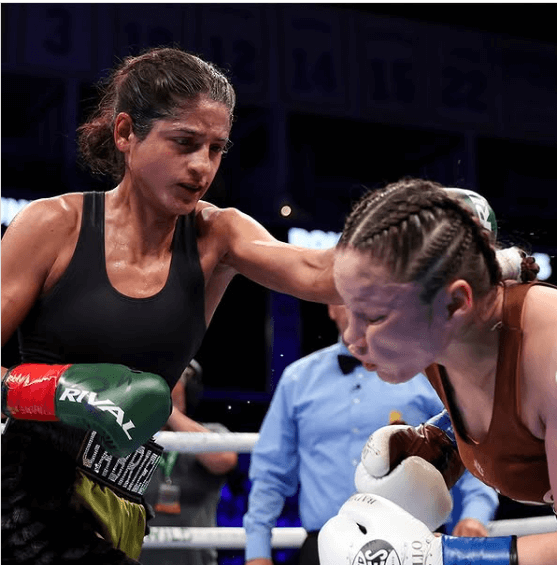
It was just a numbers game for Gabriela Fundora and despite Mexico’s Marilyn Badillo’s elusive tactics it took the champion one punch to end the fight and retain her undisputed flyweight world title by knockout on Saturday.
Will it be her last flyweight defense?
Though Fundora (16-0, 8 KOs) fired dozens of misses, a single punch found Badillo (19-1-1, 3 KOs) and ended her undefeated career and first attempt at a world title at the Frontwave Arena in Oceanside, California.
Fundora, however, proves unbeatable at flyweight.
The champion entered the arena as the headliner for the Golden Boy Promotion show and stepped through the ropes with every physical advantage possible, including power.
Mexico’s Badillo was a midget compared to Fundora but proved to be as elusive as a butterfly in a menagerie for the first six rounds. As the six-inch taller Fundora connected on one punch for every dozen thrown, that single punch was a deadly reminder.
Badillo tried ducking low and slipping to the left while countering with slashing uppercuts, she found little success. She did find the body a solid target but the blows proved to be useless. And when Badillo clinched, that proved more erroneous as Fundora belted her rapidly during the tie-ups.
“She was kind of doing her ducking thing,” said Fundora describing Badillo’s defensive tactics. “I just put the pressure on. It was just like a train. We didn’t give her that break.”
The Mexican fighter tried valiantly with various maneuvers. None proved even slightly successful. Fundora remained poised and under control as she stalked the challenger.
In the seventh round Badillo seemed to take a stand and try to slug it out with Fundora. She quickly was lit up by rapid left crosses and down she went at 1:44 of the seventh round. The Mexican fighter’s corner wisely waved off the fight and referee Rudy Barragan stopped the fight and held the dazed Badillo upright.
Once again Fundora remained champion by knockout. The only question now is will she move up to super flyweight or bantamweight to challenge the bigger girls.
Perez Beats Conwell.
Mexico’s Jorge “Chino” Perez (33-4, 26 KOs) upset Charles Conwell (21-1, 15 KOs) to win by split decision after 12 rounds in their super welterweight showdown.
It was a match that paired two hard-hitting fighters whose ledgers brimmed with knockouts, but neither was able to score a knockdown against each other.
Neither fighter moved backward. It was full steam ahead with Conwell proving successful to the body and head with left hooks and Perez connecting with rights to the head and body. It was difficult to differentiate the winner.
Though Conwell seemed to be the superior defensive fighter and more accurate, two judges preferred Perez’s busier style. They gave the fight to Perez by 115-113 scores with the dissenter favoring Conwell by the same margin.
It was Conwell’s first pro loss. Maybe it will open doors for more opportunities.
Other Bouts
Tristan Kalkreuth (15-1) managed to pass a serious heat check by unanimous decision against former contender Felix Valera (24-8) after a 10-round back-and-forth heavyweight fight.
It was very close.
Kalkreuth is one of those fighters that possess all the physical tools including youth and size but never seems to be able to show it. Once again he edged past another foe but at least this time he faced an experienced fighter in Valera.
Valera had his moments especially in the middle of the 10-round fight but slowed down during the last three rounds.
One major asset for Kalkreuth was his chin. He got caught but still motored past the clever Valera. After 10 rounds two judges saw it 99-91 and one other judge 97-93 all for Kalkreuth.
Highly-rated prospect Ruslan Abdullaev (2-0) blasted past dangerous Jino Rodrigo (13- 5-2) in an eight round super lightweight fight. He nearly stopped the very tough Rodrigo in the last two rounds and won by unanimous decision.
Abdullaev is trained by Joel and Antonio Diaz in Indio.
Bakersfield prospect Joel Iriarte (7-0, 7 KOs) needed only 1:44 to knock out Puerto Rico’s Marcos Jimenez (25-12) in a welterweight bout.
To comment on this story in the Fight Forum CLICK HERE
-
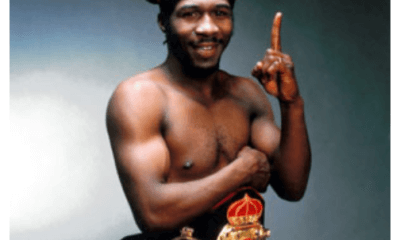
 Featured Articles4 weeks ago
Featured Articles4 weeks agoBoxing Odds and Ends: The Wacky and Sad World of Livingstone Bramble and More
-
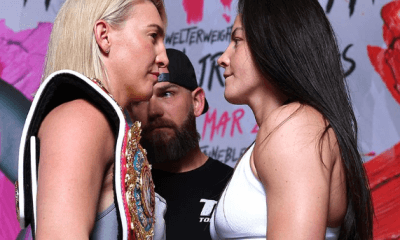
 Featured Articles4 weeks ago
Featured Articles4 weeks agoAvila Perspective, Chap. 319: Rematches in Las Vegas, Cancun and More
-

 Featured Articles4 weeks ago
Featured Articles4 weeks agoRingside at the Fontainebleau where Mikaela Mayer Won her Rematch with Sandy Ryan
-
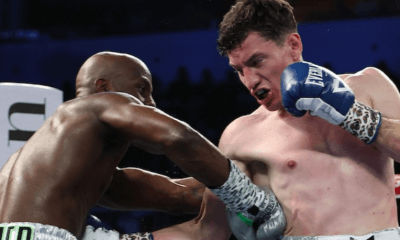
 Featured Articles4 weeks ago
Featured Articles4 weeks agoWilliam Zepeda Edges Past Tevin Farmer in Cancun; Improves to 34-0
-
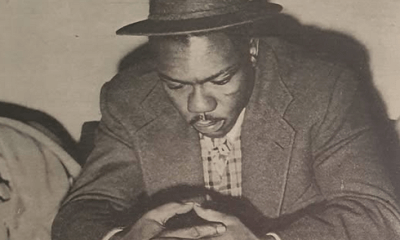
 Featured Articles3 weeks ago
Featured Articles3 weeks agoHistory has Shortchanged Freddie Dawson, One of the Best Boxers of his Era
-
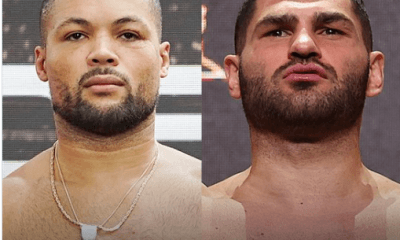
 Featured Articles3 weeks ago
Featured Articles3 weeks agoAvila Perspective, Chap. 320: Women’s Boxing Hall of Fame, Heavyweights and More
-
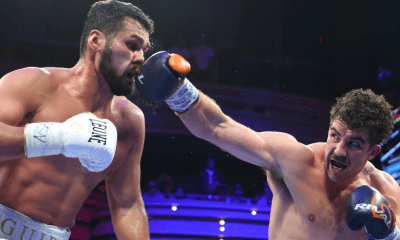
 Featured Articles3 weeks ago
Featured Articles3 weeks agoResults and Recaps from Las Vegas where Richard Torrez Jr Mauled Guido Vianello
-
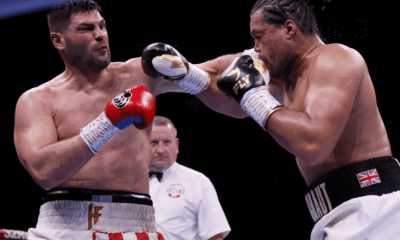
 Featured Articles3 weeks ago
Featured Articles3 weeks agoFilip Hrgovic Defeats Joe Joyce in Manchester














